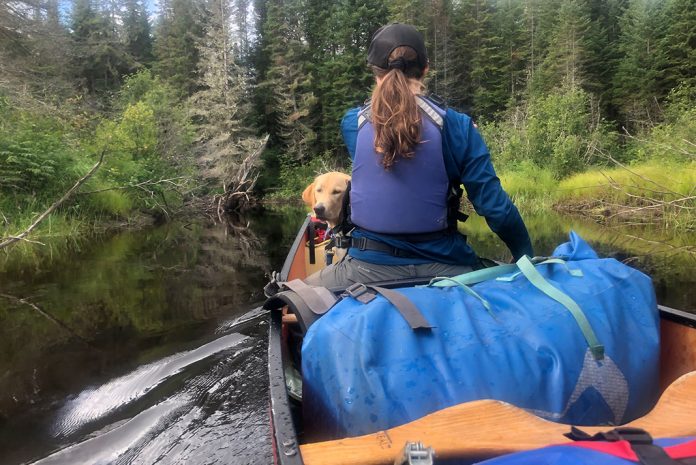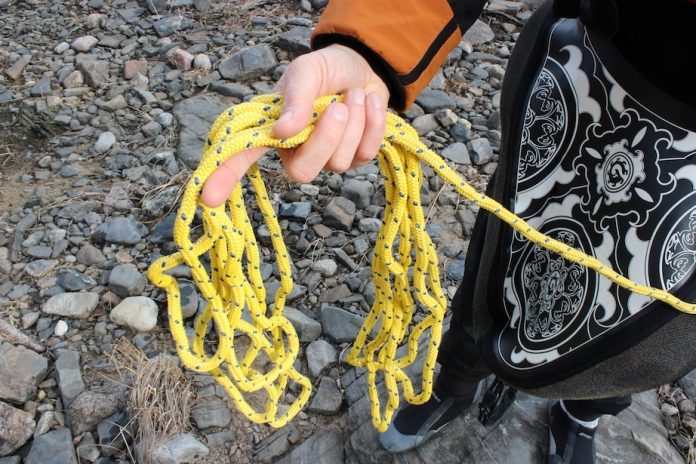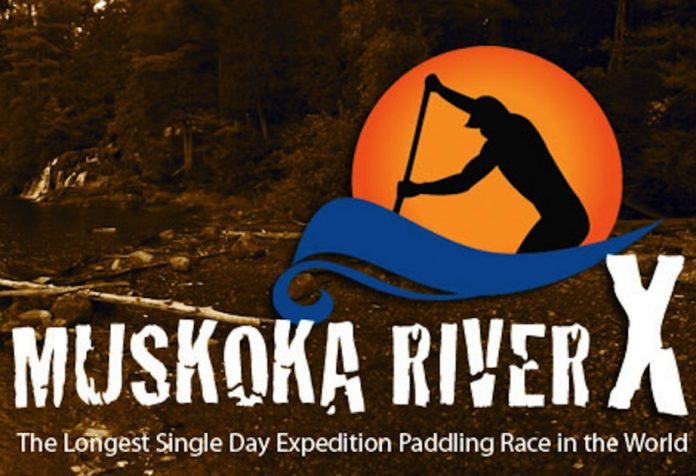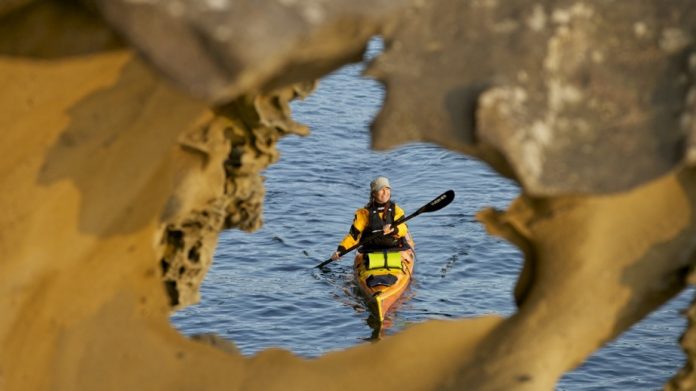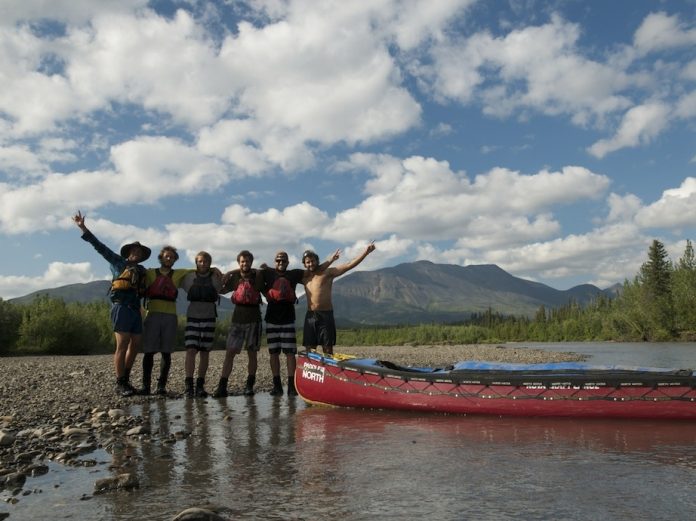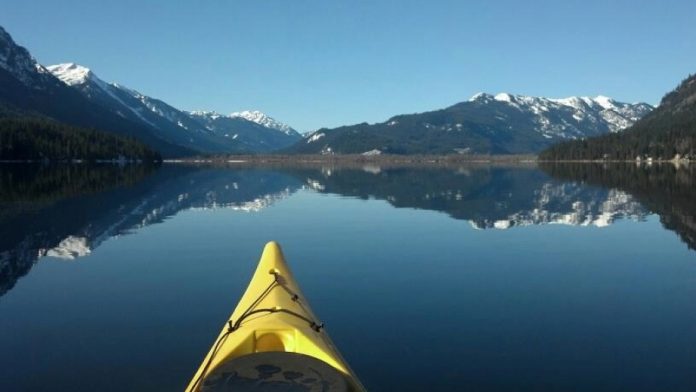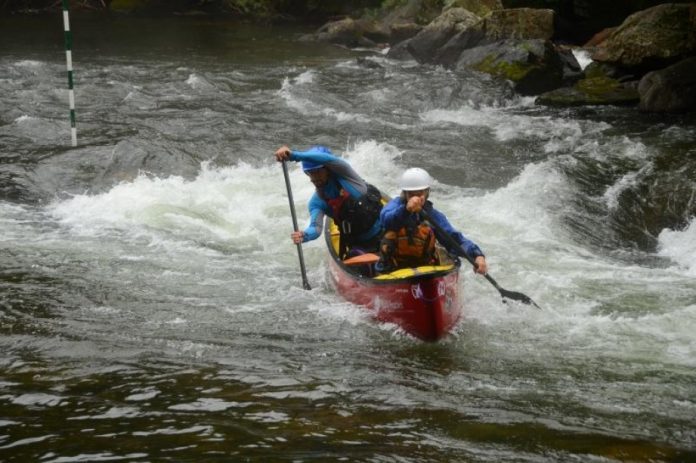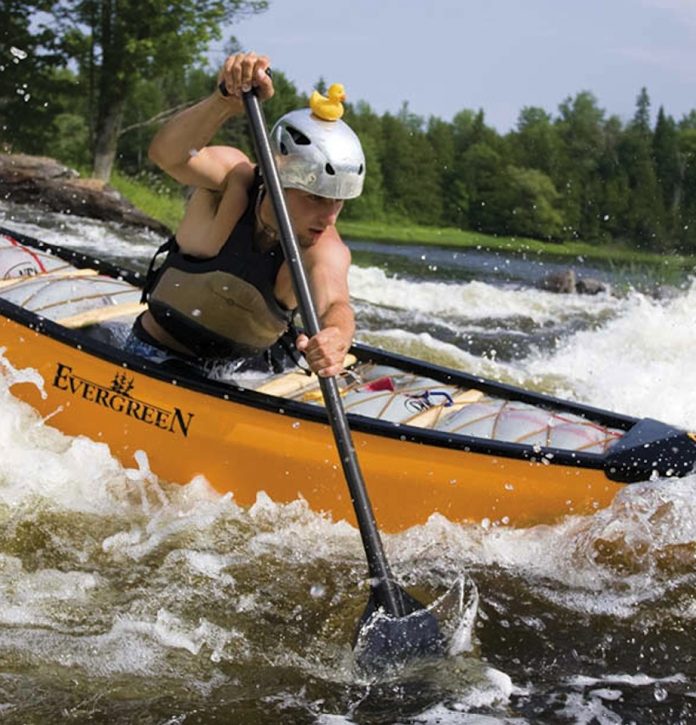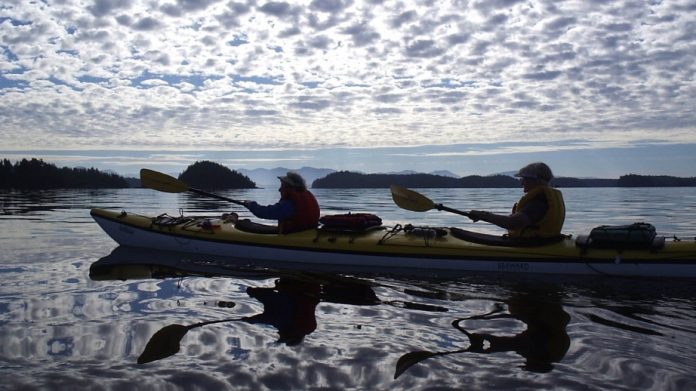This big but lightweight dry pack is simple, reliable and offers great value. Rugged and dunk-proof, it’ll find a home with backcountry canoeists and anyone else needing to keep their gear safe from the elements.
Contrary to its name, I was impressed by how comfortable MEC’s Slogg 115 is on long portages. The cushioned shoulder straps and hip belt on the easy-wearing Slogg help save your shoulders for paddling while it transfers weight effectively to your hips.
Its single 115-liter compartment means packing is super easy, but favors the already-organized. It’s cavernous blue interior will leave you searching if you drop in odd-and-ends or leave your rain gear at the bottom.
The Slogg is made of 840-denier, high-tenacity nylon and coated on both sides with PVC-free polyurethane. All seams are radio frequency welded. After seven years of hard use, the pack is only now starting to show it’s age. A couple of punctures have been easy to seal. Extend the Slogg’s life by avoiding picking it up by one handle or shoulder strap when it’s packed, to keep the attachment points in good condition.
Don’t stuff the bag too full—the stiffened roll-top closure requires a full four rolls to properly protect your gear from immersion. The closure system has been more than a match for any rainstorm and brief dunkings, but MEC warns it may not keep your gear dry during lengthy submersion.
The Slogg’s angled side handles are a welcome addition, making loading and unloading this over-sized bag much easier. They also act as anchor points, so the bag can be lashed securely if that’s your style. The Slogg comes in three sizes, a 35-liter, 70-liter and 115-liter option.
For those facing truly epic portages, MEC also offers a deluxe version with a welded frame, which mimics an alpine backpack’s ergonomics.
One bag to carry it all. | Photo: Geoff Whitlock



